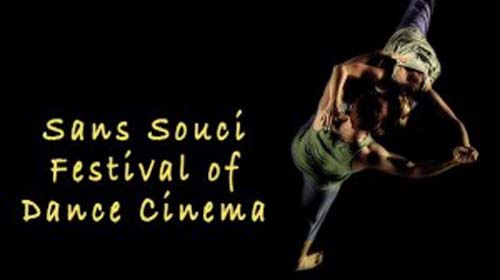
Dance and film unite in the Sans Souci Festival of Dance Brooks Robards
The Sans Souci Festival of Dance arrives virtually at the M.V. Film Center, through the media platform Eventive, on Friday, Oct. 23, and continues online until Friday, Nov. 6. It played at the Film Center on Saturday, October 24, and Sunday, October 25. Chloe Jones, executive director of the Yard, which is collaborating with the Film Center for the event, will introduce the Saturday screening.
In addition, Festival executive director Michelle Bernier will offer a Q and A with film participants Francesca Penzani, Nedra Wheeler, and Kyreeana Alexander as part of the virtual screenings.
Based on the 17th Festival Season, and including works from earlier seasons, this remarkable series offers a variety of international shorts in which modern dance combines with film to create unique effects. Unless they are already dance aficionados, viewers may find themselves challenged to appreciate these often brief and subtle sketches. But the rewards from watching them are considerable.
One of the most appealing shorts is “Double Up (2017),” which consists of a dialogue between Nedra Wheeler, who plays a bass instrument, and Kyreeana Alexander, who gives a tour-de-force of tap dance. While modern dance, like music, does not necessarily rely on narrative, the music and dancer in this short provide a back-and-forth that is engrossing.
Many of the films rely on setting to provide a significant context for their message. “Separate Sentences” (2016), from the U.S., uses dance to interpret the experience of men who’ve been imprisoned. A boy watches and interacts with them as they use their bodies creatively to express the reality conveyed by the prison cells they sometimes find themselves in.
“Nela” (2018), from the UK, features Royal Ballet ballerina Marianela Nuñez. Nuñez interprets the music of Nina Simone, using toe dancing to convey this singer aesthetically.
“Ama” (2018), from France, takes a surreal approach. The dancer appears in what looks like a giant swimming pool. Hair swirling across her face suggests submersion. Her movements, sometimes leaping and other times floating, add to the effect, until finally it becomes clear when she blows bubbles that rise to the surface.
“Men” (2020) comes from Finland and uses a cast of male dancers from the Hanna Brotherus Company to articulate what it means to be of that gender. Occasionally it seems like the dancers are fighting, while at other times they form a cluster on the floor.
Relying on the relationship between father and son, “Molat & Molat” (2015), from the U.S., is the most conventional of the shorts. It begins with dancer Pascal Molat and his 5-year-old son Matisse walking together. The camera shows them from their backs, suggesting a certain anonymity. Matisse narrates, saying, “This is a story about Pascal Molat dancing.” The boy comments periodically on his father’s interpretations, and eventually the statements “Le deuxi?me acte” and “Le troisi?me acte” follow. The sequence ends with father and son again walking together.
From Canada comes “Pilgrimage” (2017) by the Migration Dance Film Project. In this work nine dancers use Turkish usul musical patterns with dance movements as they interact with the environment. Windmills provide a background, as well as fields of green plant crops, and a full moon.
Finally, TWINS “You must be related!” from the U.S. relies on two young women to dance their relationship. “Interstate” (2018), also from the U.S., uses a dancer wearing an animal mask to interpret the relationship between humans and animals. It takes place outdoors in a wilderness setting.
The Sans Souci Festival of Dance is based in Boulder, Colo., and has been screening dance films there since 2004. Its mission is to promote the aesthetics between dance and film and develop an audience for the two.
